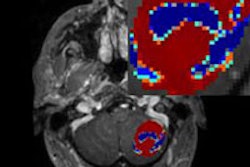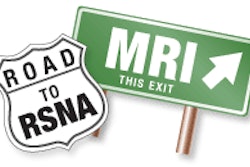Furthermore, DWI with Gd-EOB-DTPA-enhanced MRI seemed to particularly improve detection of subcentimeter lesions by a less experienced radiologist. The lead author of the study was Antonella Filippone, MD, from SS Annunziata Hospital at D'Annunzio University in Chieti, Italy.
The study noted that MRI scans have become increasingly important in assessing liver metastases due to the development of faster imaging techniques and the introduction of novel liver-specific contrast media. Gd-EOB-DTPA (gadoxetic acid disodium [Primovist], Bayer HealthCare Pharmaceuticals, Berlin) is a liver-specific MRI contrast agent that allows for combined dynamic and hepatocyte-specific imaging in one examination.
The researchers retrospectively enrolled 54 patients with less than five surgically proven hepatic metastases from colorectal cancer, who underwent Gd-EOB-DTPA-enhanced MRI scans, including diffusion-weighted imaging. All 54 patients also underwent liver resection after intraoperative ultrasound within two weeks of the MRI scan.
Two independent readers reviewed three image sets -- DWI, Gd-EOB-DTPA, and DWI with Gd-EOB-DTPA -- to detect hepatic metastases. All lesions were divided in three groups of smaller than 1 cm, 1 cm to 2 cm, and larger than 2 cm.
The study revealed a total of 115 liver metastases, with a mean diameter of 2.3 cm, ranging in size from 0.4 cm to 6.3 cm. Regardless of lesion size, the accuracy in detecting hepatic metastases was lowest for DWI alone. Accuracy increased with Gd-EOB-DTPA and increased yet again with the combination of DWI and Gd-EOB-DTPA.
In addition, with the less-experienced reader, DWI with Gd-EOB-DTPA showed significantly higher sensitivity than DWI or Gd-EOB-DTPA for lesions smaller than 1 cm. There were no significant differences between the three imaging options for lesions larger than 1 cm and for the experienced reader.
Filippone and colleagues concluded the combined assessment of DWI and Gd-EOB-DTPA enhanced MR images and increases readers' diagnostic performance, thus improving detection of small metastatic lesions. Therefore, they suggest using this approach in daily clinical practice to evaluate MR images of patients suspected of liver metastases, regardless of the level of experience of the interpreting radiologist
"Using this policy could lead to improve staging of patients with colorectal liver metastases," the authors noted. "In clinical practice, a better staging means to tailor option treatment in the best way and, at the end, to improve the clinical outcome."



















